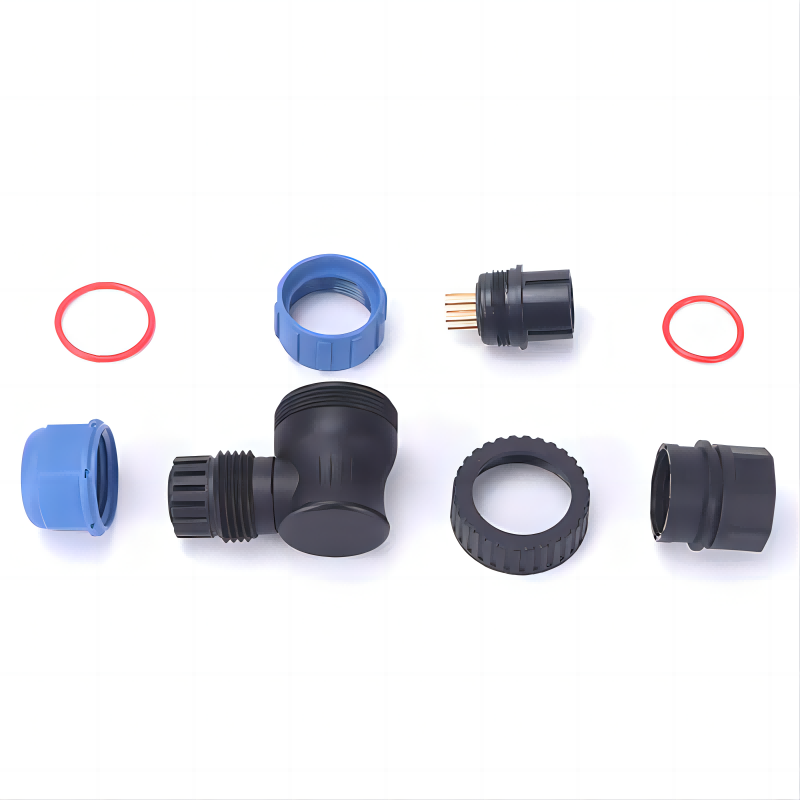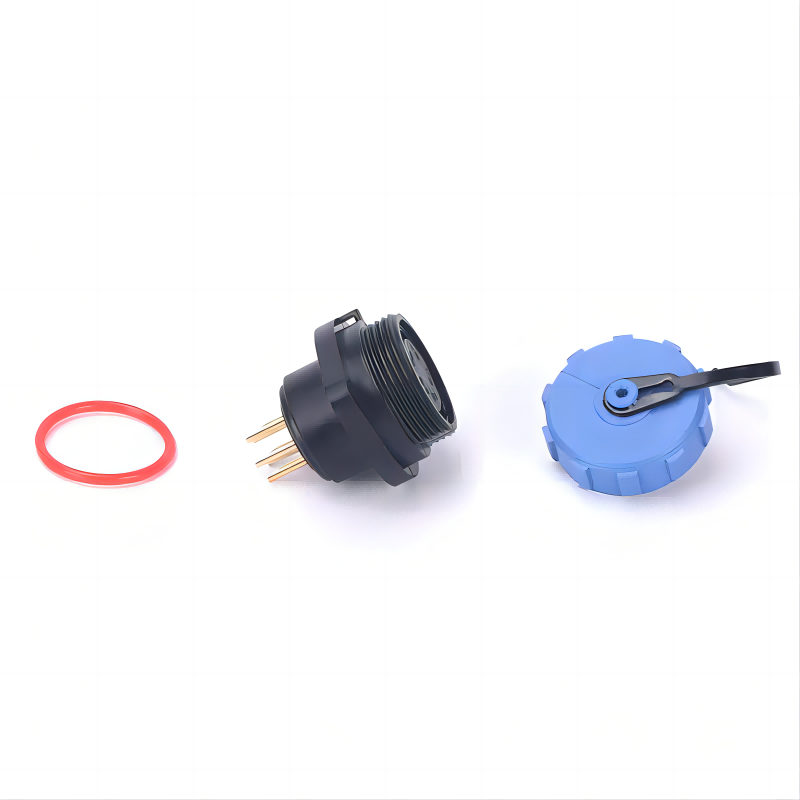A connector is an electronic element used to establish contact sensors, physical connections within, or between, electronic devices. Connectors are usually used by one or more sockets and other connectors to connect electronic components, components, cables, or other equipment to enable the transmission of data, signals, or power. Connectors usually use contact devices such as pinholes, pins, sockets, plugs, locking, clamping or pressing to develop electrical and mechanical connections. The types and specifications of connectors are used in electronics, computer, communication, automobile, industrial control, medical equipment, rail transit, aviation and other fields respectively.

A connector is an electronic component for the transmission and exchange of current or light signals between electronic system devices. The connector, as a node, transmits current or optical signals between devices, components, equipment and subsystems independently or together with cables, and maintains no change of signal distortion and energy loss between the systems, and is the basic element necessary for it to form the connection of the whole complete system. Connectors can be divided into electrical connectors, microwave RF connectors and optical connectors according to the type of signal transmitted. The electrical connector bridges two conductors in a circuit. It is a motor system that provides a separable interface to connect two secondary electronic systems.
What are the basic principles of the connector?
The basic principle of the connector is to connect the conductor of the electronic element and the circuit in order to transmit signals and power in the electronic device. Many physical and electrical properties are designed and manufactured, such as conductivity, impedance, RF loss, signal interference, waterproof grade and corrosion resistance, etc. Connectors typically have one or more pins that can be precisely aligned and safely locked when inserted into the target device. These pins are usually made of metal and can transmit electric current, signals and data. Other basic principles of connectors include reliability, durability, and ease of use.
The role of the connector
1. Establish physical connection: The connector is a physical connection device connecting the inside of the electronic equipment and between the equipment, which can stably connect the electronic equipment, components, cable or other equipment together, so as to ensure the transmission effect of signal, data or power.
2. Transmission of electrical signals and power: the connector has electrical conductivity, which can transmit electrical signals and power. The electrical conductivity of the connector ensures the accurate transmission of signal and current.
3. Rapid disassembly: The connector can be quickly disassembled as needed to achieve equipment maintenance and upgrading. This reduces the failure time and simplifies the equipment troubleshooting process.
4. Easy management and configuration: the connector can make easy to debug and manage the equipment configuration. The connector can be increased or reduced according to the specific needs to facilitate the adjustment and upgrade of the equipment system.
5. Improve the equipment performance: the quality of the connector has an important impact on the performance of the equipment. A good connector can greatly improve the transmission efficiency, signal accuracy and reliability of the equipment.
6. The connector can easily connect and disconnect the circuit of the electronic equipment. This makes it much easier to maintain and replace the circuits.
7. Connector can provide a reliable electrical connection. This is very important because electronic devices may be disturbed by the external environment, such as vibration and electromagnetic interference. Connectors can help ensure the reliability and consistency of signal transmission.
8. Connectors can provide standardized interfaces, which makes the interconnection between different types of electronic devices easier and more reliable. In conclusion, connectors play a vital role in electronic devices, where they can provide reliable electrical connections, convenient connections and disconnected circuits, and facilitate interoperability between electronic devices.
What is a connector

Connector, that is, the CONNECTOR. Also known as connector, plug and socket. Generally refers to the electrical connector. That is, a device connecting two active devices to transmit a current or a signal.
The connector is a kind of component that we electronic engineers often touch with. Its role is very simple: in the circuit is blocked or isolated circuit between, build a bridge of communication, so that the current flow, so that the circuit to achieve the predetermined function.
Connectors are an indispensable part of electronic devices. When you follow the path of the current flow, you will always find one or more connectors. Connector form and structure are ever-changing, with different application object, frequency, power, application environment, there are various different forms of connector. For example, the connector for the field and the hard drive, and the connector that lit the rocket are very different.
But no matter what kind of connector, to ensure a smooth, continuous and reliable circulation of the current. In general, the connector is connected is not only limited to the current. In today’s rapid development of optoelectronic technology, in the optical fiber system, the carrier of signal transmission is light, glass and plastic replace the wires in ordinary circuits, but connectors are also used in the optical signal pathway, their function is the same as circuit connectors.
Post time: May-29-2023
